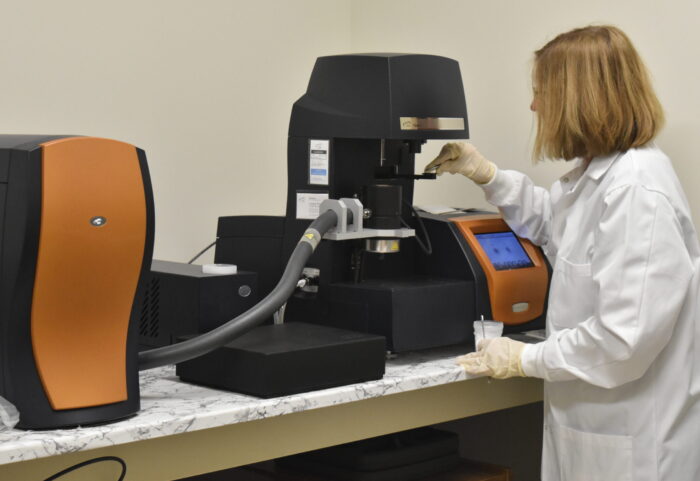Materials and Chemistry Laboratory, Inc. has expanded our analytical capabilities to include Thermal Characterization. This capability is useful in a variety of applications, including analysis of carbon fiber and other complex composites. Our system includes Thermogravimetric Analysis (TGA) coupled with Mass Spectrometry (MS). Thermal analysis combined with compositional analysis is a powerful tool to identify evolved gas during thermal processes.
The TA Instruments TGA-55 with Discovery Mass Spectrometer is used to simultaneously perform thermogravimetric measurements on inorganic materials including ceramics, glasses and metals, as well as high polymer organic materials. The ideal sample size for this system is between 20-50 mg. Samples are analyzed in an inert gas environment at temperature ranges from ambient temperature to 1000°C.
In essence, TGA utilizes heat and stoichiometric ratios to determine composition and purity. Changes in sample weight are monitored either isothermally as a function of time or, more commonly, in relation to gradually rising temperatures as components decompose. Weight percentage versus time/temperature is analyzed to find the points of inflection which may indicate degradation temperatures, absorbed moisture content of materials, the level of inorganic and organic components in materials, decomposition points of explosives, and solvent residues.
Coupling TGA with MS offers structural identification of compounds evolved during thermal processes. The off-gas of the TGA is streamed into a Mass Spectrometer, an analytical instrument in which ions are separated by electromagnetic fields according to their mass-to-charge ratio. The ions are then detected and processed into mass spectra to identify the constituents out-gassed from the sample.
TGA-MS offers lab bench top representations of large-scale processes to permit evaluation of chemical pathways for degradation reactions. For example, MCLinc recently utilized this system to identify constituents in waste that lead to a runaway reaction, as well as constituents that needed to be closely monitored to ensure safe and efficient waste treatment processes.

